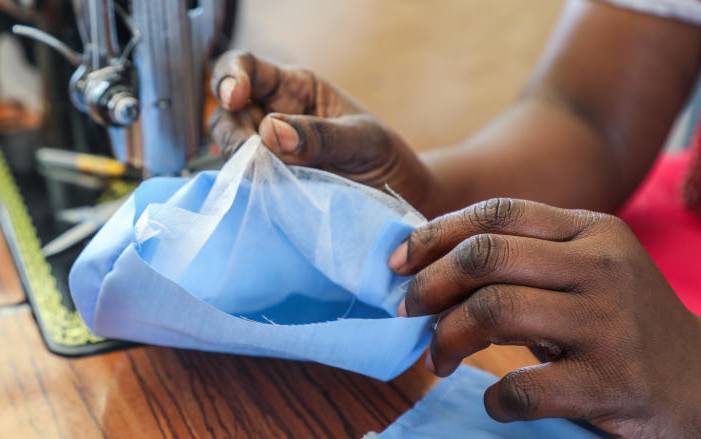Public transport is an essential service but it is directly contributing to the spreading of Covid-19 infections with indirect transmission through contaminated surfaces.
It is assumed that public transport, either through matatus, taxis, or motorcycles, is the conduit for the recent spate of increased spread of the virus with quite many victims contracting the disease while on travel.
For this reason, and with a similar mindset given the serious threat posed to the health and lives of Kenyans by the spread of Covid-19 pandemic, the government through the Transport and Health ministries enacted a public health act (Legal Notice No. 50) with directives, policies and laws on Covid-19 restriction of movement of persons and related measures.
These measures underscore with clarity why cessation of movement and control of public transport is fundamental to the lives, livelihoods, and health of our nation.
However, with public transport operations humming back to life amid the deadly combination of increased exposure and subsequent poor access to health care, the coronavirus leaves no room for complacency as the industry is a weak link in efforts to contain the pandemic.
According to government epidemiologists, the coronavirus that causes Covid-19 can linger in the air for at least 30 minutes and travel up to 4.5 metres – farther than the “safe distance” recommended by health authorities around the world.
Covid-19 transmissions are bound to increase with the possibility of rebounding if restrictions are lifted thus yielding tensions between public health imperatives and socio-economic decisions.
The public transport players (drivers and conductors) may be lulled into thinking that the different measures being enforced in the wake of the Covid-19 may amount to nothing if the transportation gaps are not quickly addressed.
The operators seem particularly adept at working in tight seating arrangements with limited ability to identify potentially sick persons. Interestingly, they are not embracing this strange new reality nor are they publicly opposed to it.
Equally, public transport players are forcing commuters to see the world through their lenses, which is purely economical and often appears to be disorderly. This toggling between pseudo-normalcies can be disorienting and is fraught with danger leading to delays in realising the gains of containment strategies.
The government's direction to public transport vehicles to operate at 60 per cent maximum of sitting capacity is one containment strategies to avoid catastrophic outbreak and re-contextualise the management of public transport.
Effective measures that match the constraints of the management context in public transport may call for a shift from reliance on private transport to an integrated public transport system with the new mass transport system.
The resolve and determination of the public transport players to offset the disruptive effects of Covid-19, relieve hardships, rescue and revitalize industry have been met with logistical challenges like sanitation, overcrowding/congestion, lost revenue, higher cost for frequent cleaning of vehicles.
With a low number of commuters and subsequent decline in travel demand due to behavioural change, public transport vehicles tried to recompense the loss of revenue by raising fares. Simon Kimutai, the Matatu Owners Association chairperson, says passenger transport revenue has dropped by over 70 per cent amid the Covid-19 pandemic.
To that effect, public transport ought to take appropriate measures to protect both the community and its workers and ensure the business continues as usual. It should have business continuity plans addressing the safety and alignment to change management with strategies and plans to enhance sector resilience.
The management has to allow access control with temperature monitoring of commuters entering with staff being provided with face masks, gloves, and hand sanitisers.
The management, drivers, and conductors in tandem have to scale up the disinfection and sanitisation of their vehicles, ensure physical distancing and encourage good hand hygiene (before boarding and after disembarking) and good ventilation.
Other policy interventions of cashless transactions, institutional strengthening, and management, adequate supply and availability of public transport, advocacy for cycling to improve mobility, and most importantly expanding private sector partnerships to boost investments and technology use in public transport must be pursued relentlessly.
Ultimately there is a need to carefully justify, and plausibly so, all the specific public health, socio-economic, governance, and ecological measures to mitigate Covid-19 risks and maintain public transport services while examining, monitoring, and reporting on transport-related management of Covid-19.
Amid the Covid-19 pandemic, the public transport is grappling with finding normalcy in the abnormal. Normalcy in public transport doesn’t seem so mutually exclusive with our present one.
Never the less, always the more, Kenya has never been through such a pandemic before as most commuters and operators are still fazed by the oddness of their new normal.
- Dr Samson Gitahi is a researcher with ACAL Covid-19 Thinktank
 The Standard Group Plc is a multi-media organization with investments in media platforms spanning newspaper print
operations, television, radio broadcasting, digital and online services. The Standard Group is recognized as a
leading multi-media house in Kenya with a key influence in matters of national and international interest.
The Standard Group Plc is a multi-media organization with investments in media platforms spanning newspaper print
operations, television, radio broadcasting, digital and online services. The Standard Group is recognized as a
leading multi-media house in Kenya with a key influence in matters of national and international interest.











